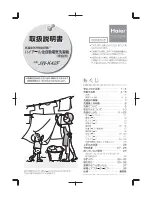
702_58300000170749_ara_en_c
Page 30 of 82
This material is intended for the sole use of BSH authorized persons and may contain confidential and proprietary
information. Any unauthorized review, use, copying, disclosure, or distribution in any format is prohibited.
4.17 Water softener (selected models)
The water softener
(ion exchanger)
consists of a container with
fine-grained, synthetic resin beads. The beads use dishwasher
softener salt to make soft water by replacing calcium and
magnesium ions in hard water with sodium ions.
Soft water provides better washing results, allows less detergent
to be used and helps prevent water spots from forming on dishes
and glassware.
1. Ion exchanger
2. Water inlet
3. Water outlet
4. Regeneration valve
5. Salt dispenser cover 6. Float (optional)
7. Salt dispenser
8. Low salt sensor
TIP:
With soft water, regardless of dishwasher brand /
type, glassware can become permanently cloudy from
water stealing minerals from them – especially with
hotter water and longer wash cycles. To reduce this
possibility, customers should be told to not pre-rinse /
pre-wash dishes and to wash fine glassware using
delicate wash cycles.
4.17.1
Softening
The synthetic resin beads have a negative charge
(“-“)
, which
attracts positively charged
(“+”)
calcium
(Ca)
and magnesium
(Mg)
ions of hard water in the softener. These ions have a
stronger positive charge than the sodium
(Na)
ions on the beads
and knock them off. The sodium ions replace them in the water,
making soft water.
When the sodium
(Na)
ions have been used up, the softener
must be regenerated.
4.17.2
Regeneration
To make the softener available for softening, concentrated salty
brine (sodium chloride) flows from the salt dispenser. The large
surplus of sodium ions from the brine displace the calcium and
magnesium ions and attach to the beads.
3
1
4
2
7
5
8
6
1
1
1. Synthetic resin bead
1. Synthetic resin bead
















































